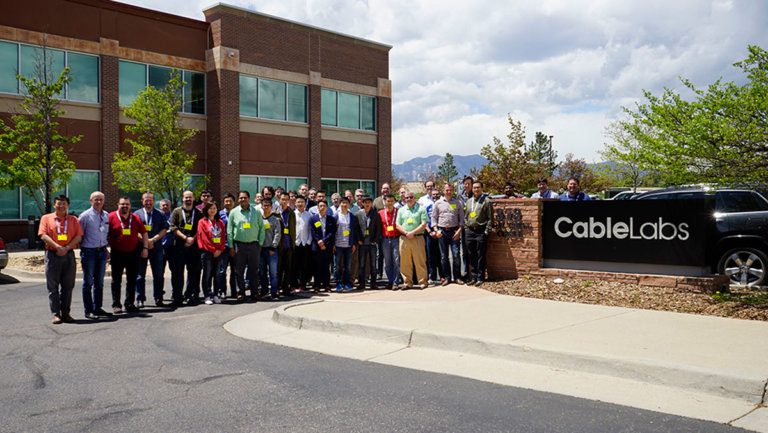Networks
Network Operator Perspectives on NFV priorities for 5G

Today, twenty-three network operators published a white paper to guide the industry on priorities for NFV to deliver the industry vision for 5G systems: "Network Operator Perspectives on NFV priorities for 5G". The network operator co-authors include Bell Canada, BT, CableLabs, CenturyLink, China Mobile, China Unicom, Colt, Deutsche Telekom, KDDI, KT, NTT, NTT DOCOMO, Orange, Portugal Telecom, Rogers, SK Telecom, Sprint, STC, Swisscom, Telecom Italia, Telefonica, Telenor, and Vodafone. As managing editor for this white paper, I worked closely with colleagues from these leading organizations to document some key consensus requirements that we want the 5G standards community to take into account in their upcoming specification work.
We believe the evolved 5G network will be characterized by agile resilient converged fixed/mobile networks based on NFV and SDN technologies and capable of supporting network functions and applications encompassing many different networks and services domains. The breadth of foreseen 5G use cases and environments implies high scalability, ultra-low latency and ability to support a massive number of concurrent sessions, as well as ultra-high reliability and security. To achieve these ambitious goals, Network Slicing, Cloud-native design principles, End-to-end Service Management, Edge Computing, RAN Cloudification, Multi-site/domain Services, NFV License Management, Security, Reliability, and Scalability are important enablers as outlined in some detail in this paper.
In an era of increasingly stretched resources, it is vitally important for standards development organizations and open source communities to avoid re-invention and wasteful duplication of effort. Hence, an important message is to encourage reference to the extensive body of foundational NFV specification work already published by the ETSI NFV Industry Specification Group over the past four years as the basis for 5G.
As managing editor, I believe this white paper should be used as guidance for the wider industry on how NFV should be used to realize 5G use cases.
What is CableLabs Doing in this Space?
The cable network will provide an ideal foundation for 5G because it is ubiquitous and already supports millions of Wi-Fi nodes in places where the majority of wireless data is consumed. It has high capacity for both Access and Backhaul. It is highly reliable and has low intrinsic latency because it is based on optical fiber which penetrates deep into the access network feeding wideband coaxial cables reaching all the way to the end-user premises. Moreover, it is a multi-node remotely powered access topology ideally suited to support the connection of the large number of small cells close to homes and businesses that will be needed for 5G.
A multi-faceted CableLabs R&D program is addressing the key technologies required for 5G around NFV and SDN that we are executing on behalf of our cable operator stakeholders. For example, CableLabs is progressing an intensive study of virtualized provisioning of the cable access network to enable programmability, our NFV/SDN reference platform is based on OPNFV and we are looking ahead to support 5G using an end-to-end virtualized architecture that includes low latency edge compute nodes located at the cable head-end. In addition, we are seeking to accelerate NFV/SDN interoperability through CableLabs’ Kyrio subsidiary which has built an interoperability lab where vendors can work together with operators to toward their NFV and SDN solutions.
By Tetsuya Nakamura, Principal Architect, Strategy & Innovation, CableLabs
Labs
OPNFV’s Inaugural Plugfest Hosted by CableLabs

OPNFV’s first Plugfest was held at CableLabs’ facility in Louisville, CO. This event, which focused on deployment and integration of OPNFV as well as Virtual Network Function (VNF) applications, was open to both OPNFV members and non-members.
A key goal of the Plugfest was to fortify OPNFV's already unique testing projects and infrastructure (functional and performance) across new use cases from OPNFV members and other interested parties. Forty one participants from nineteen organizations--including three non-members--from around the world attended. They brought their key NFV use cases and the technologies needed to bring them to fruition. Many commented that the in-person collaboration was a major benefit.
OPNFV began eighteen months ago as an effort to ensure that open source projects such as OpenStack, OpenDaylight and others can be integrated into a carrier-grade environment that fully supports the performance and availability requirements of service provider networks.
Accordingly, OPNFV, along with CableLabs and Kyrio, hosted the plugfest to help establish testing criteria and find testing solutions to ensure NFV interoperability.
Mitchell Ashley, President and General Manager of Kyrio said, “Kyrio was founded by CableLabs to bring innovations and expertise to the market. Our experienced engineers are thought leaders in NFV. We congratulate OPNFV on its inaugural plugfest! It supports our mission to guide the community in virtualizing network services.”
The Plugfest used the test functionality first methodology and then measured results accordingly. The Functest (function testing) and Yardstick (system measurement) projects were heavily represented, along with the the Storperf (storage performance) and CPerf (controller performance) projects. In particular, the Cperf project is doing extensive SDN controller integration on various installers.
Additionally, all of the installer groups (Apex, JOID, Fuel and Compass) were represented and members extensively used these installers on different platforms (including on-site community labs that were generously provided by Huawei and Intel).
The Plugfest focused on the installation of NFVI and of VNFs (such as vIMS and vEPC) on multiple hardware platforms using multiple installers. In many instances, these combinations were attempted for the first time, and with OPNFV’s testing infrastructure in place, new VNF were benchmarked much more quickly than would otherwise be possible.
In addition to all the real-time interop testing of NFV infrastructure and applications, the Plugfest included several well-attended and valuable breakout sessions on OpenDaylight, the Functest and Yardstick testing projects, and a session on the entire OPNFV testing ecosystem. Many of the lessons from these sessions were immediately applied in the lab. All lessons from the entire Plugfest will be fed back into OPNFV Certification & Compliance Committee efforts.
As we look to the future, we hope to expand future Plugfests to multiple geographic locations. This will allow OPNFV to test our multisite applications. We will also concentrate on new use cases made possible by the Colorado release. As with this Plugfest, OPNFV will continue to reach out to other communities to get a broader spectrum of users involved in NFV application development.
News
Harmonizing NFV Information Modeling Through Industry Collaboration

Last week CableLabs hosted a ground-breaking industry workshop to encourage harmonization of Information Modeling for network function virtualization. The event was organized by the ETSI NFV Industry Specification Group and brought together the leading Standards Development Organizations (SDOs) and Open Source communities. Participating organizations included 3GPP, ATIS, Broadband Forum, DMTF, ETSI NFV, IETF, ITU-T SG15, MEF, OASIS/TOSCA, Open Cloud Connect, ONF, OpenDaylight, OPNFV and TM-Forum. Over 90 of the world’s key experts participated.
Each organization outlined its work on information modeling and its relevance to the NFV goals. A collaboration plan was agreed to address the challenges and opportunities identified with a goal of achieving harmonization by the end of this year. CableLabs will be actively involved in this collaboration effort via our leadership roles in ETSI NFV and open source communities.

Some of the participants in the workshop
What is the benefit of NFV information modeling harmonization?
Harmonization of NFV information modeling enables consistent and open APIs for efficient evolvable integration across the entire ecosystem including software defined networks (SDN) and NFV. The motivation for NFV is to realize significant business benefits including rapid service deployment, CAPEX/OPEX reduction, service elasticity, and multi-vendor inter-operability. It is very important to ensure end-to-end network service automation because different groups own different parts of the overall model leading to the potential for fragmentation and increased complexity if automation cannot be applied efficiently and without manual intervention.
Service providers need to deploy the software on top of a distributed cloud environment as their end goal and timeline is important. To accelerate NFV realization and demonstrate model validation through the whole lifecycle management of virtualized network functions (e.g. virtual CPE), it will be helpful to collaborate with open source communities.
What is CableLabs doing in this space?
CableLabs has been working in the open networking and virtualization space for about three years and we have a number of NFV and SDN R&D projects in progress on behalf of our cable operator stakeholders. In particular, we are working on information models and data models for virtualizing the Converged Cable Access Platform (CCAP) and customer premises equipment (CPE). We are also looking at how virtualization can be applied in the home network to simplify operations, reduce costs and improve customer experience. As part of those projects, we have a number of our own developers actively developing prototypes which we are contributing to open source projects such as OPNFV and OpenDaylight.
The vendor-agnostic, non-profit environment at CableLabs is unique and ideally suited to collaborative R&D, especially open source development. We have implemented software-based network platforms at our Sunnyvale and Louisville locations and we will continue to be actively involved in both open source communities including OPNFV and OpenDaylight, and the ETSI NFV through our R&D activities and vendor-neutral testing.
Tetsuya Nakamura is a Principal Architect in the Strategy and Innovation Group at CableLabs.

